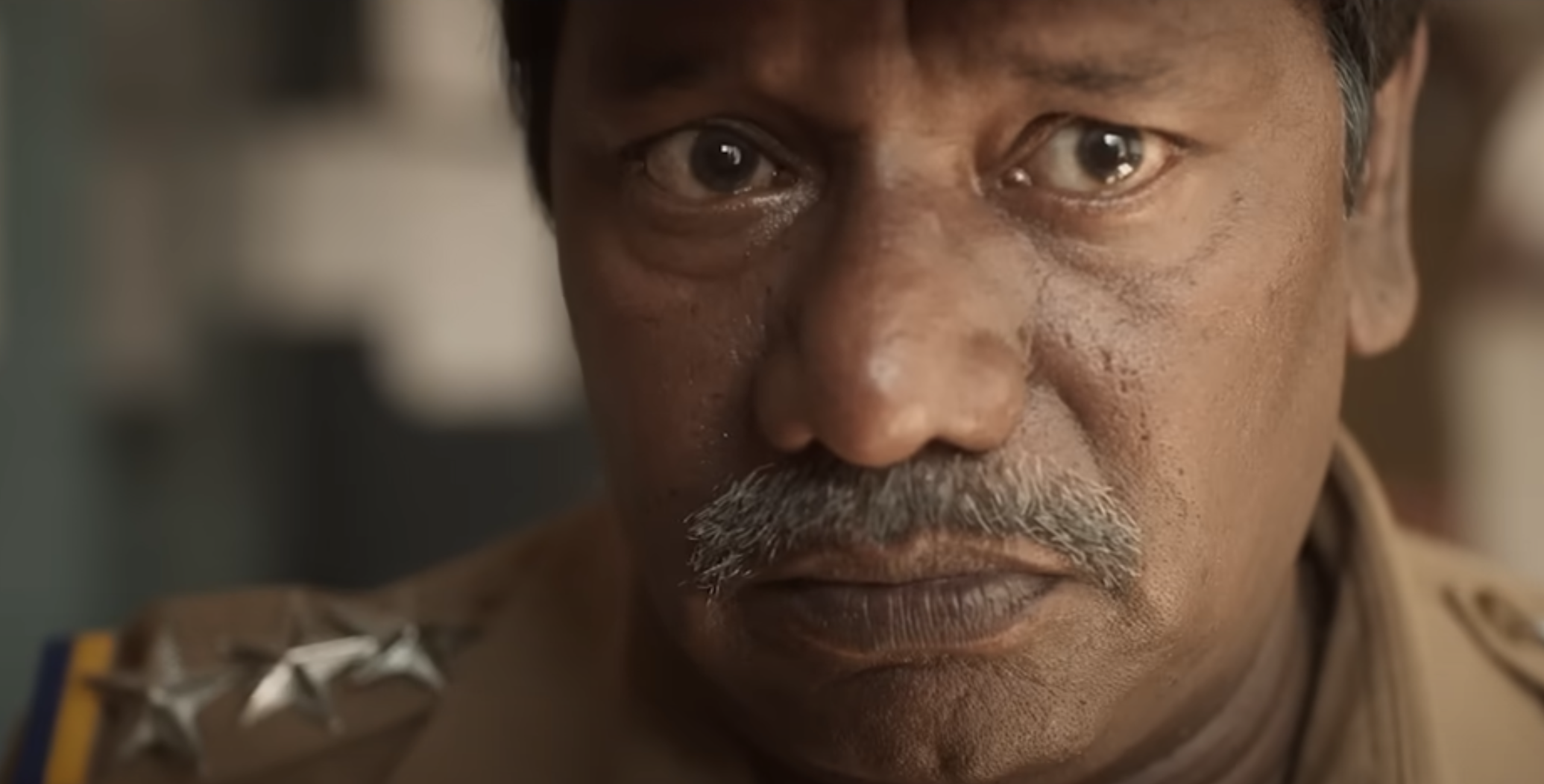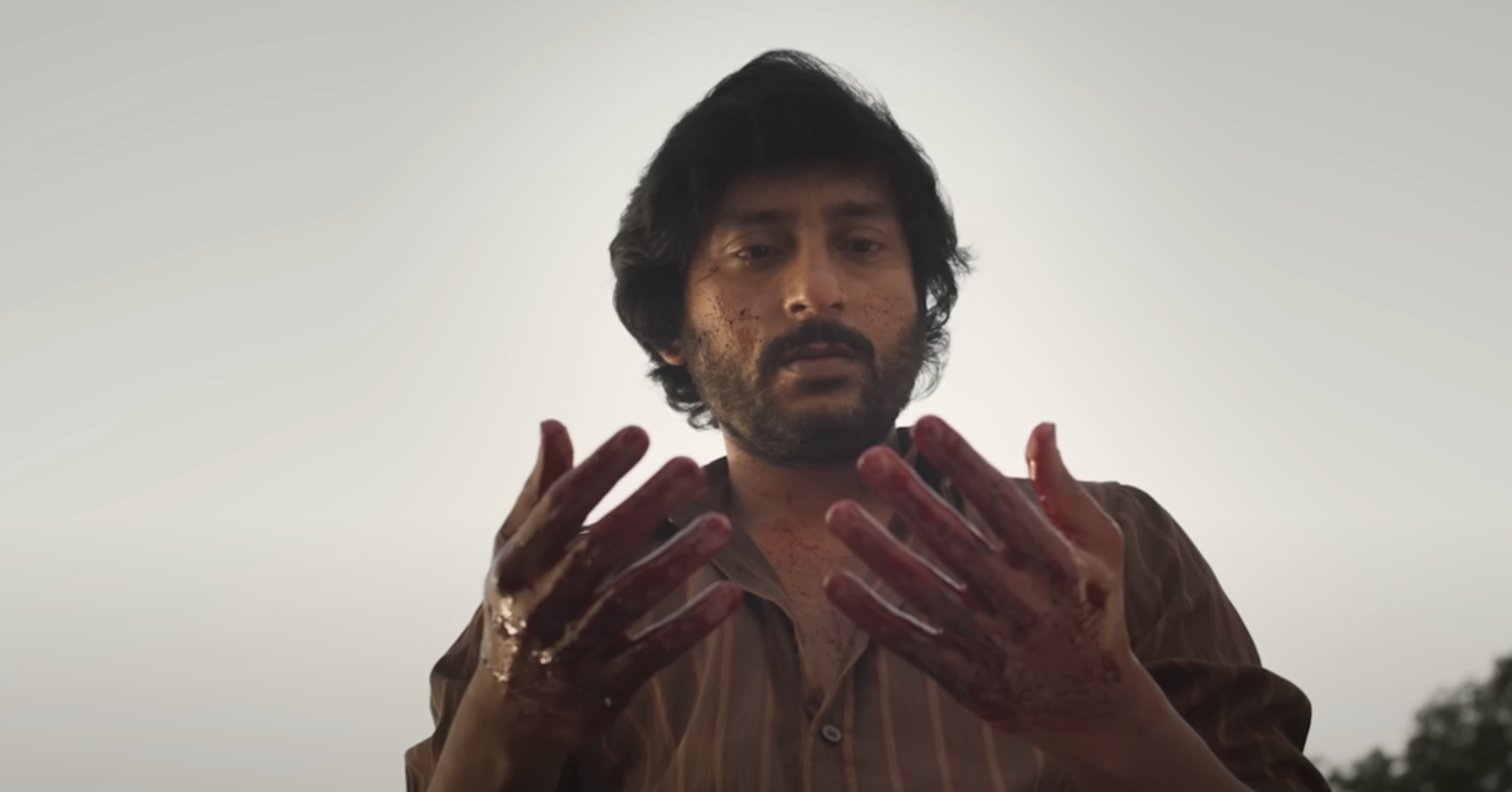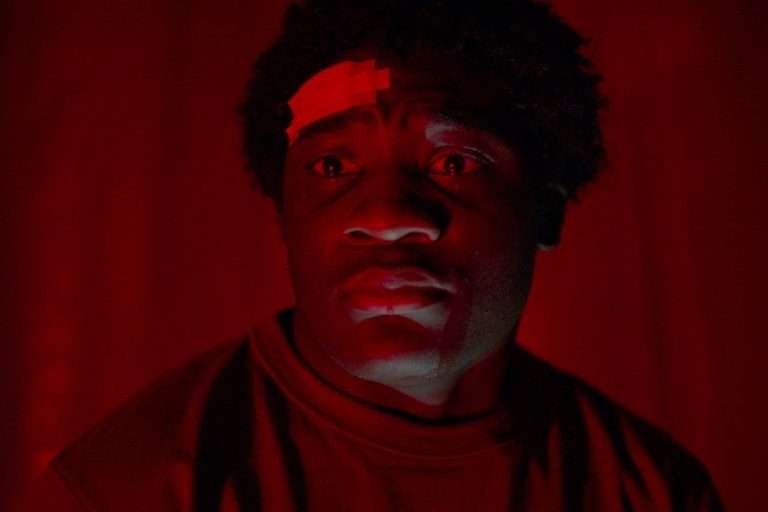Spoilers Ahead
Sorgavaasal (2024) Plot Summary & Movie Synopsis:
How does Parthiban’s Path Come Across with Siga?
Parthiban’s entry into the prison system is a direct result of systemic corruption and personal vendettas. Framed for the murder of IAS officer Shanmugam, Parthiban is not only deprived of his freedom but also stripped of his dignity. Despite these injustices, he remains resilient. His defiance in the face of humiliation, including the retaliation against the inspector who disgraced his mother, underscores his unwavering commitment to justice and self-respect.
This resilience manifests further when he crosses paths with Siga, the prison’s de facto ruler. Parthiban’s refusal to submit to Siga’s dominance highlights his unyielding moral compass and foreshadows his role as a disruptor within the corrupt prison hierarchy. Siga’s authority within and beyond the prison is well-established, thanks to his wealth and influence. Despite his criminal past, Siga begins a transformation following his baptism and the adoption of Christianity. However, remnants of his past linger in the form of his loyal but volatile associates, particularly Tiger Mani, whose aggression often escalates conflicts.
When Parthiban starts probing into Siga’s alleged involvement in Shanmugam’s murder, he disrupts the fragile balance of power. Siga’s associates, feeling threatened, attack Parthiban, leading to a violent clash. Parthiban’s ability to fight back earns him respect but also deepens the animosity. Siga’s intervention to stop Mani’s assault signals the beginning of a shift. While initially driven by self-interest or maintaining control, this act hints at Siga’s emerging morality.
Parthiban’s defiance acts as a mirror for Siga, reflecting the possibility of true reform. While Siga has embraced Christianity outwardly, Parthiban’s resilience and courage challenge him to internalize these values. This confrontation forces Siga to confront his dual identity as both a criminal and a man seeking redemption.
Why Does Siga Plan to Expose Sunil?
Sunil’s authoritarian rule is marked by exploitation and dehumanization. Siga endures humiliation under the guise of frisking, a deliberate act to undermine his authority and dignity. Sunil further antagonizes Siga by targeting those he values, including Mani and Kendrick. The confiscation of Kendrick’s Bible and the subsequent brutal treatment, which leads to Kendrick’s tragic death, become defining moments for Siga. These events intensify Siga’s internal conflict between violent retaliation and the need for a more impactful response.

Siga’s violent outburst after Kendrick’s death signals his breaking point. However, Seelan’s intervention introduces a new perspective. Seelan advises Siga that exposing Sunil’s systemic cruelty to the public is more effective than isolated acts of violence. This guidance aligns with Siga’s transformation and his attempt to reconcile his faith with his actions.
The planned visit by reporters and church sisters on Christmas Day offers a unique opportunity for Siga to reveal the inhumane conditions of the prison. By leveraging this moment, Siga seeks to hold Sunil accountable and bring attention to the systemic abuses. His plan symbolizes a shift from reactive violence to strategic resistance, reflecting his evolution as a character.
How does Siga Die?
Sunil exploits Parthiban’s desperation for freedom by coercing him into unwittingly participating in Siga’s death. He deceives Parthiban by claiming that Siga’s confession will secure Parthiban’s release, manipulating him into adulterating Siga’s food. Although the substance is initially presented as a laxative, Parthiban believes it to be poison. Despite his moral reservations, Parthiban reluctantly agrees.
Parthiban’s internal struggle becomes evident when he refrains from giving the adulterated food to Siga, despite Sunil’s coercion. This decision underscores his inherent morality and reluctance to cause harm, even under duress. However, Mani, unaware of the food’s contamination, inadvertently gives it to Siga, setting the tragic events into motion.
Moments before consuming the food, Siga clears Parthiban’s name by confessing his lack of involvement in Shanmugam’s murder. This act of honesty reflects Siga’s transformation and his desire to set things right, even as his own fate is sealed. Siga’s death, caused by the contaminated food, triggers a chain reaction. The discovery of additional toxic substances in his system exposes deeper corruption. The news of his death incites chaos within the prison, with Mani assuming control and rival gangs seeking vengeance, highlighting the volatile power dynamics Siga leaves behind.
What Causes the Fight between Seelan and Mani?
The fight between Seelan and Mani stems from clashing ideologies, mounting tensions, and Mani’s descent into paranoia. Their conflict reflects deeper fractures within the prison’s power dynamics. Mani’s growing frustration over the perceived injustice surrounding Siga’s death drives him into a state of fury. He is enraged by the government’s partial concessions and fears that Siga’s murderers may escape accountability. This emotional turmoil pushes Mani to adopt increasingly extreme measures. His decision to mutilate one of the VIP prisoners, using Parthiban as a pawn, underscores his desperation to send a message to the government.
Seelan, a voice of reason and strategy, disapproves of Mani’s reckless behavior. While both initially aim to leverage the hostage situation for better treatment and justice, Mani’s aggressive tactics and alliance with Siga’s rival gang deepen the rift. By locking up other inmates and focusing on vendetta rather than collective goals, Mani jeopardizes the broader fight for justice, earning Seelan’s disapproval. Mani’s suspicion that Parthiban played a role in Siga’s death adds fuel to the fire. Fueled by Mohan’s accusation about the powder and his own unrestrained anger, Mani becomes consumed by vengeance. This paranoia isolates him further, leading him to betray Seelan and align with rivals who seek control of the prison.
Sorgavaasal (2024) Movie Ending Explained:
What Happens to Parthiban?
Parthiban’s decision to rescue the three captive MLAs marks a pivotal moment in his story. By enabling their escape, he provides leverage for the prisoners to negotiate with the government. This act not only demonstrates his resourcefulness but also positions him as a key player in the unfolding events. The MLAs’ escape indirectly leads to governmental concessions, but it also ensures that Parthiban gains favor with powerful figures.

Parthiban becomes entangled in Sunil’s death when he kills him to silence the revelation of Siga’s poisoning. However, he cleverly shifts the blame onto Mani, aligning with Kattabomman to protect himself. This strategic move allows Parthiban to evade scrutiny, even as Ismail harbors doubts about the true sequence of events. Parthiban’s ability to manipulate the narrative reflects his adaptability and determination to survive in a corrupt and violent environment.
Despite his involvement in Sunil’s death, Parthiban’s actions which save the lives of the MLAs earn him a degree of security. Since one of the three MLAs is now a Home Minister, the rest looks pretty clear. His family benefits from newfound prosperity, suggesting that his sacrifices and morally gray decisions were driven by a desire to secure a better future for them. However, his return to prison as a cook and his reflective gaze at his wedding photograph indicate a lingering sense of loss and unresolved guilt.
Parthiban’s alliance with Kattabomman reveals a mutual understanding rooted in shared secrets. Their silent acknowledgment underscores the blurred lines between heroism and complicity. Parthiban emerges as a complex figure; both a victim of circumstances and an architect of his fate. His journey is marked by moral compromises, leaving him a free but burdened man. His story reflects the harsh realities of survival in a system defined by power and corruption.
Who Killed Shanmugam?
The identity of Shanmugam’s killer remains unknown, but it is clear that Parthiban is not involved. Before his imprisonment, Parthiban led a simple life, focused on taking care of his mother, saving money to open a hotel, and marrying Revathy. His goals are modest and untainted by any involvement in criminal activities.
Siga’s rejection of the proposal to kill Shanmugam opens the possibility that Mani or someone else might have committed the murder, potentially seeking favor from the MLAs in return. Shanmugam’s death sets off a chain of events that indirectly benefits Parthiban in ways he could not have foreseen. The MLAs profit directly from the situation, but in a complex and distant way, the aftermath of Shanmugam’s murder ultimately aids Parthiban in achieving his life goals.
Now, Parthiban owns a thriving hotel and is married to Revathy, having secured the life he once dreamed of, albeit through an unexpected and morally ambiguous path. Had Shanmugam been alive, Parthiban’s life outside prison would likely have been fraught with financial struggles, including repaying loans and dealing with other mundane hassles. Instead, Parthiban chooses to embrace a different fate, living as a “king in hell” rather than kneeling in heaven.







